The Yamaha R15 needs no introduction. It set a new benchmark for the entry level performance bikes a decade back with the V1.0 (version 1.0) and later followed up with the (more) aggressive V2.0. Last month, at the Delhi Auto Expo, Yamaha took off the wraps from this all-new V3.0 and surprised us with a relatively affordable sticker price of Rs 1.25 lakh, ex-showroom. For a fractional increment over the earlier version, V3.0 seemed to offer a lot for your buck, atleast on paper. Right then, I couldn’t wait to lay my hands on the bike and what better way to do so than around the famous Chennai track, the MMRT (Madras Motor Race Track)
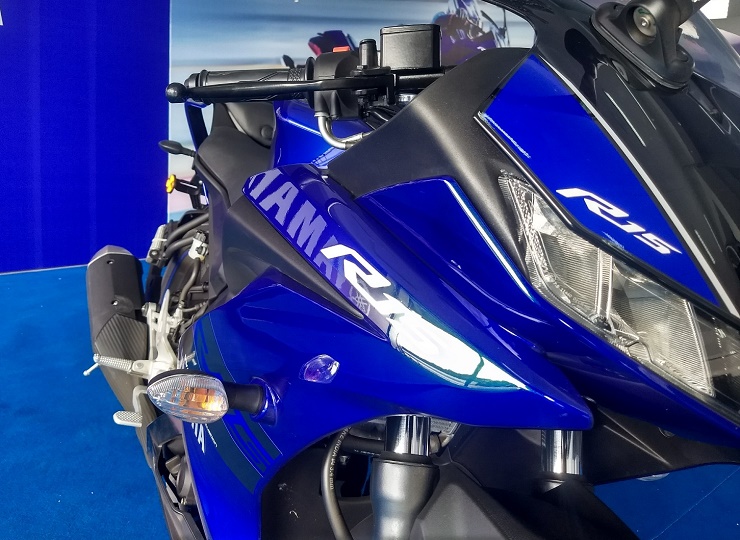
A stunner!
Now this has been true for every single R15 till date. In fact, with each passing iteration, the R15 has become sharper than ever before. It looks like a baby R1 and in this price range, there is no better way to announce your arrival. Most body parts are new and lend a very sporty, more like a super-sports design to the bike. We love the new twin LED headlamp set-up front, positioned on either ends of the fake air-intake cowl. DRLs (day-time running lights) are also present and tail lamps too get the LED treatment. Then there is the bubble fly screen which feels generous in size the moment you tuck in at high speeds.
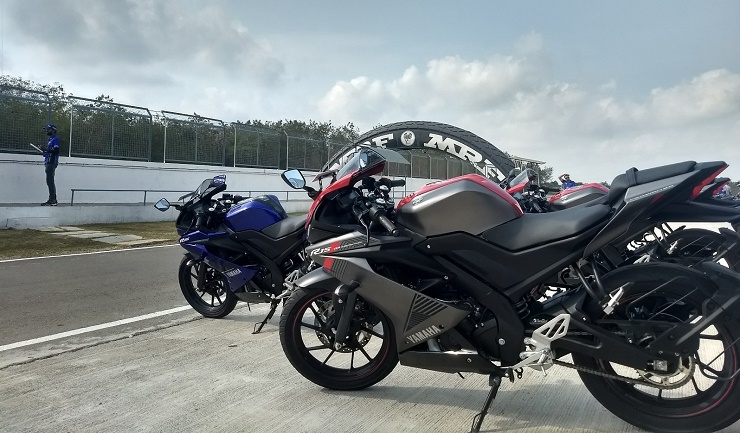
You also get a dual tone paint scheme with two options, namely, red with grey and blue with black. Sadly, white is not offered right now but knowing Yamaha’s love with rolling out new paint schemes every few months, this could very well make it to India later this year. Place the first version next to this and you will realize how boring it looks now – don’t get me wrong as V1.0 still turns heads in admiration.
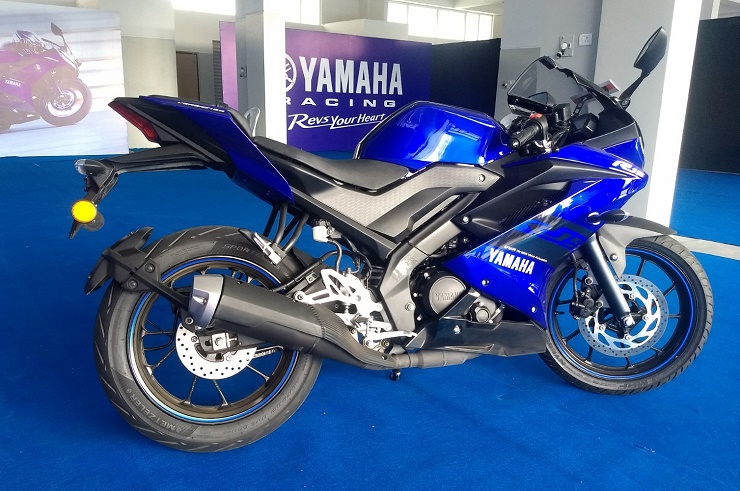
The side panels are new, so is the fuel tank. However, its got a not so premium plastic and a flimsy feel and now holds a litre less of fuel. The new R15 retains the split seat set-up and thankfully, the height difference between the rider and pillion seats has come down. The rider seat itself has gone up by 15mm and the saddle height now stands at 815mm.
Feature loaded
Yamaha has upped the ante in this segment by offering a host of features on the R15 V3.0. The all-new full LCD console takes inspiration from the R1 and has a wealth of information to show. This includes the average and instantaneous fuel economy, average speed and even the VVA icon that pops up when its active. VVA by the way stands for variable valve actuation which is a segment first offering – more on this later.
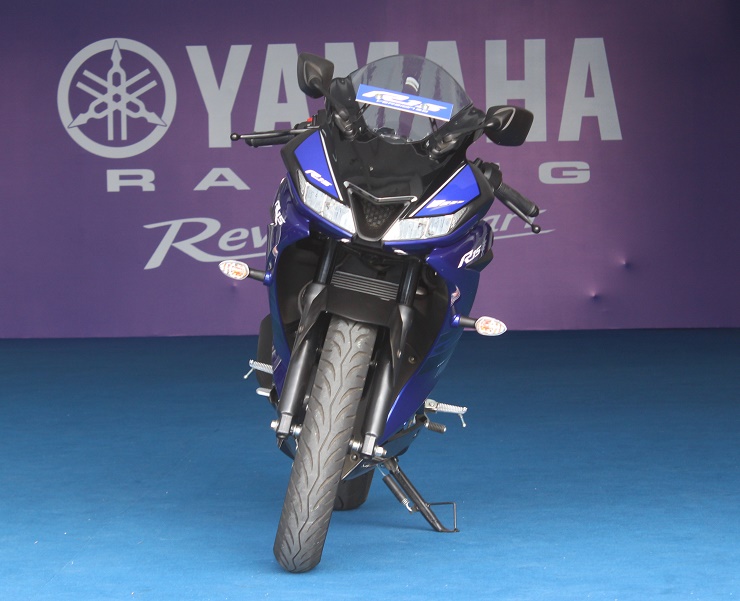
The bike also runs on slightly wider tyres – 100mm up front and 140mm at the back. Owners can also buy the optional, stickier Metzeler rear tyre about Rs 9998 and thankfully, our test bikes were shod with this. The front disc is larger now though the rear continues to be of the same size. The bike also sits higher by 10mm, good for those worried about ever rising speed breakers.
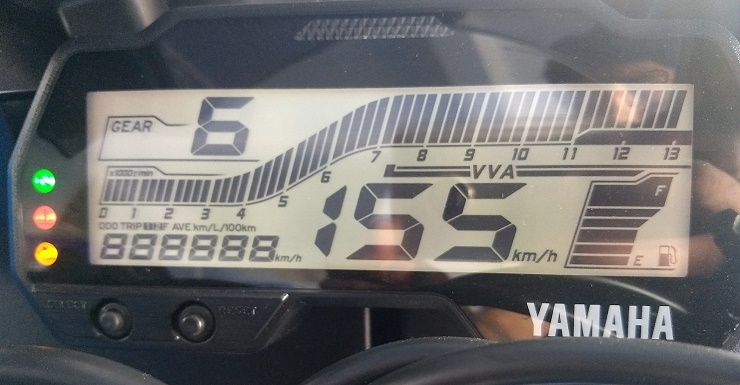
Yamaha will also sell an array of accessories for the R15. This includes the Daytona muffler (not road legal) for Rs 16,700, seat cover for Rs 430, frame slider for Rs 2,450, skid plate for Rs 500, tank pad for Rs 225 and a USB connector for charging mobiles on the go.
Tech on offer
With the first R15, Yamaha offered affordable modern day tech with terms never heard before in the segment. The legacy continues with the R15 V3.0 as well. The bike sports an assist and slipper clutch now – the former has made clutch operation easier while the latter prevents locking up of the rear if you downshift to lower gears at higher speeds – no more wheel hopping or scary slides into corners! This also, to an extent, covers up for the absence of ABS, especially during wet riding conditions.
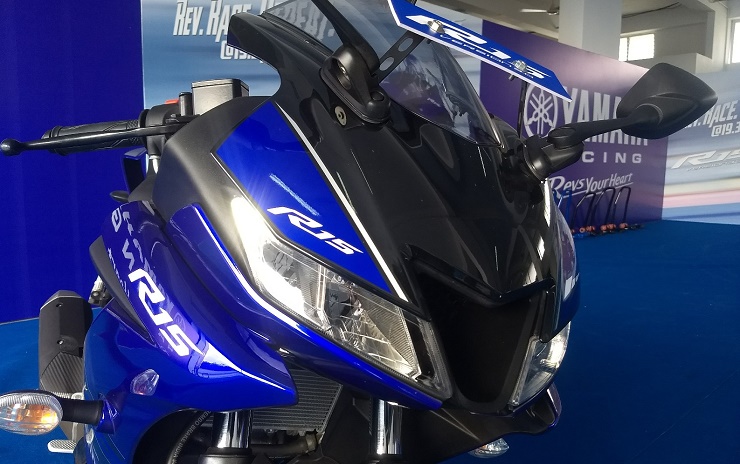
Next on the cards is VVA, which like the slipper clutch, is a segment first. This system makes use of two different cams with one boosting the ever important low-mid range punch while the second works above 7,400 rpm, giving you the required kick on a race track.
The four valve engine remains liquid cooled but has a new type of cooling system that reduces engine warm-up time.
Heart of the matter
Enthusiasts and engineering nuts will love this part – the heavily revised engine now has an increased capacity which stands at 155cc. Revisions include a new connecting rod with a smaller bearing diameter of 26mm (28 on V2.0) that helps reduce mechanical loses and better acceleration. The crankcase is also new and gets enlarged breathing holes which helps reduce pumping loses – this has been one of the reasons for the engine’s higher power output. The injector is also new and gets 10 tiny holes as compared to 6 on the earlier version. This in turn helps boost combustion efficiency, one of the reasons why V3.0 is approximately 4% more efficient than V2.0. The engine gets a new nickel spray spark plug with high ignitability and longer life.
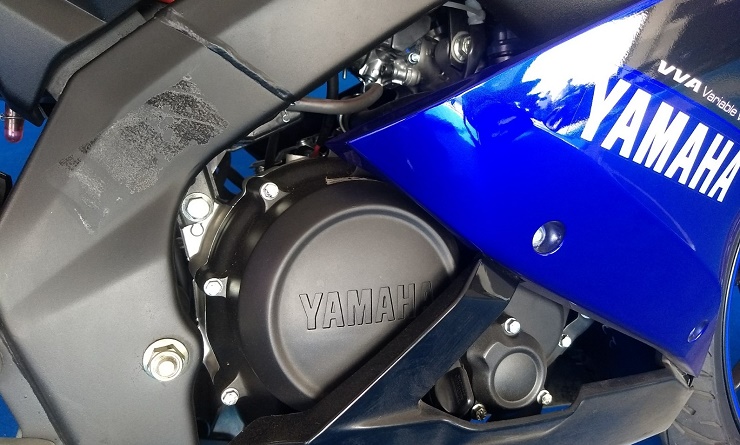
And we haven’t finished yet, there is more! The engine gets a newly designed cylinder head with a compact pentroof combustion chamber for optimal combustion. The valve heads’ diameter is larger by a millimeter with the advantage being lower intake resistance and good tumble. Throttle bodies too are larger by 2 mm, allowing for increased volumetric efficiency. And finally, the air filter is literally huge, with a capacity of 5.5-litre as against 2.9-litre on the earlier version.
Phew! As you can see, Yamaha engineers have left no stone un-turned in this area. All these changes combined together with a higher compression ratio of 11.6:1 not only helps the engine rev freely to 10,000 rpm, it also puts out 16% higher power, 19.3 PS. The 6-speed gearbox is retained though secondary drive has been revised to suit the engine characteristics better.
Performance on tap
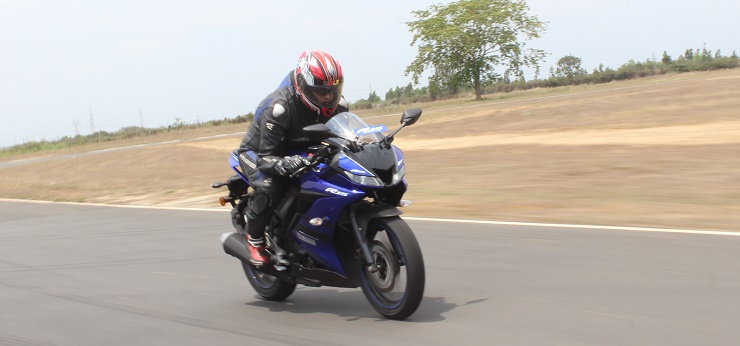
Exciting isn’t a word that is normally associated with 150cc motorcycles. Wrong. The R15 V3.0 continues to showcase Yamaha’s prowess when it comes to enjoyable small capacity super-sport motorcycles. I have been lucky enough to ride both the previous versions at this same track and the R15 continued to impress me, way beyond my abilities. The initial warm up laps gave enough hints of the committed riding posture but even after taking into consideration my over grown frame, I did not feel cramped. This is no naked, up-right city bike and those investing into a performance based fully faired motorcycle ought to know what they are putting their hands into.
After the initial two sedate laps, we were let free on the bikes by the expert marshals. VVA was truly experienced here, with the engine not feeling weak between 2000-4000rpm. Push it hard, let the revs rise beyond 8000 and the power never tapers off. VVA also allowed me to be in a higher gear at some of the corners, with potent mid-range showing its true side. This is one of the best improvements over the earlier versions which were known to have poor in-gear roll-ons at lower revs. There is a hint of vibes from the pegs and bars but nothing that would be annoying like some of the other entry level performance bikes out there. Get my hint?
The engine is good for about 45 in the first gear, almost 75 in 2nd and just under 100 in 3rd. I did see 127 on the speedometer on more than one occasion and have every reason to believe that given the right road and a lighter rider, this 155cc motorcycle will do an indicated 135-140 kmph. Already excited? Those into long distance touring can rejoice – the R15 V3.0 does 110 kmph in the 6th cog at 8000 rpm with enough in reserve to overtake fast moving traffic.
Control
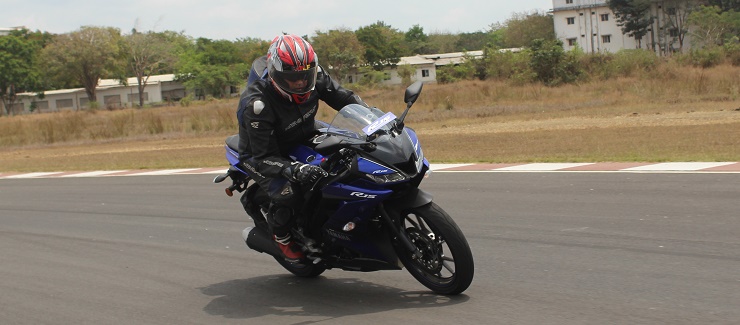
The R15 is a perfect example of the famous saying, “performance is nothing without control”. This is a very forgiving machine, one that will not make you nervous easily and allow you to explore your limits easily. I am no expert and frankly an amateur when it comes to track riding and yet, I was confident enough to keep up with others, even overtaking a few rider while leaned into a corner. Mid corner lift offs and mid corner gear changes too did not upset the bike at all. The beefier front fork tubes (now 41 mm) do help a lot and so does the wider and shorter swing-arm.
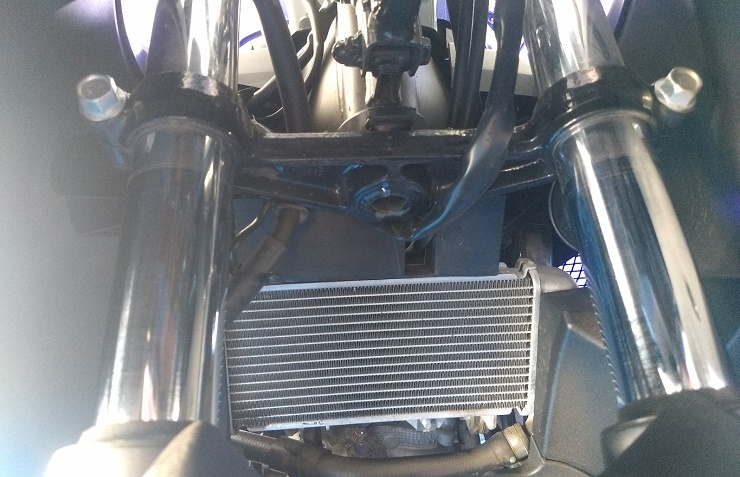
Yamaha has also reduced the trail by 10 mm, that’s a big number by the way. The larger front disc did allow me to brake later into a corner. That said, the rear mono-shock is not adjustable and felt a bit too supple for my weight and liking. However, it will feel at home on city roads which do not offer the same tarmac levels as a race track.
Verdict
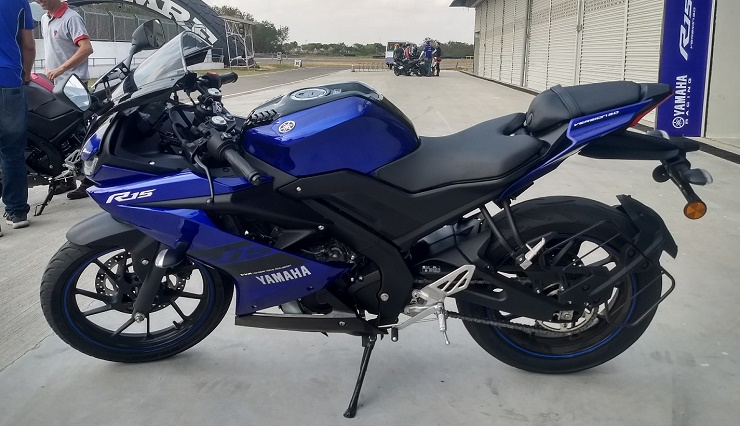
The new R15 might have gained a few kilos, 3 to be exact and is expensive by about INR 6,500 but these are fractional amounts when you consider the gains. Yes, ABS is still missing and this is a big surprise given that cheaper motorcycles now get optional ABS but ride this bike for five minutes and you will be floored. If you are in the market looking for a genuine small capacity performance motorcycle, one that ticks almost all the right boxes to justify the ‘performance’ tag, look no further. And pick one in blue, Yamaha’s official color. May the (tuning) forks be with you. Ride safe!
[“Source-cartoq”]





